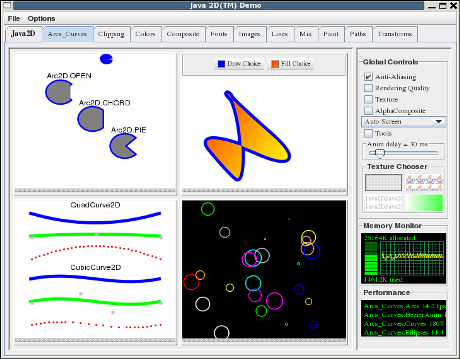gcjwebplugin
My main goal for Fedora Core 6 was the inclusion of gcjwebplugin, so I’m very pleased that it will in fact be included. Though it is not enabled by default, having it in the base distribution means that interested people can experiment with it and file bug reports, with the minimum of configuration. We’ve already received some bug reports as a result. This is exactly the level of adoption I had hoped for in this release. I hope others will try their favourite applets and file bug reports if they don’t work, since doing so helps direct our gcjwebplugin development efforts.
In the meantime, work continues on GNU Classpath’s security implementation, so we should be able to safely run untrusted applets in Fedora Core 7.
Looking over my Fedora Core 5 Wishlist I see that many of my FC-5 wishes have been realized in FC-6.
Merging
Most of the proposed merging work happened during the FC-6 cycle. The following projects were merged into GNU Classpath:
- GNU Crypto
- Jessie
- cp-tools
- gcjwebplugin
The only straggler is gjdoc. In a short period of time we’ve managed to merge all these separate but essential projects into one coherent whole in GNU Classpath. This is good for everyone: VM projects that bundle GNU Classpath (Kaffe, libgcj, IKVM.NET, CACAO), who now all have access to the same tools; distributions, who now have fewer packages to maintain; and free Java developers, who now have a single, central location in which they can fix bugs in the class library and tool chain. I’m especially happy about the current tools situation, because before the merging work, VM projects each wasted effort on their own implementations of some tools; now we can all focus on making the GNU Classpath tools the definitive best set.
Applications and Applets
- MegaMek works on libgcj, and is packaged and awaiting approval for inclusion in Fedora Extras
- Azureus works on libgcj and is in Fedora Extras
- many applets work on gcjwebplugin
AWT and Swing
The constant stream of AWT and Swing fixes and improvements in GNU Classpath means that many more AWT and Swing applications and applets work on libgcj. One large improvement in Fedora Core 6 is that the Cairo Graphics2D backend is now the default. Though GNU Classpath’s Graphics2D implementation is still being actively developed, the snapshot in FC-6 can run much of Sun’s Java2D demo:
